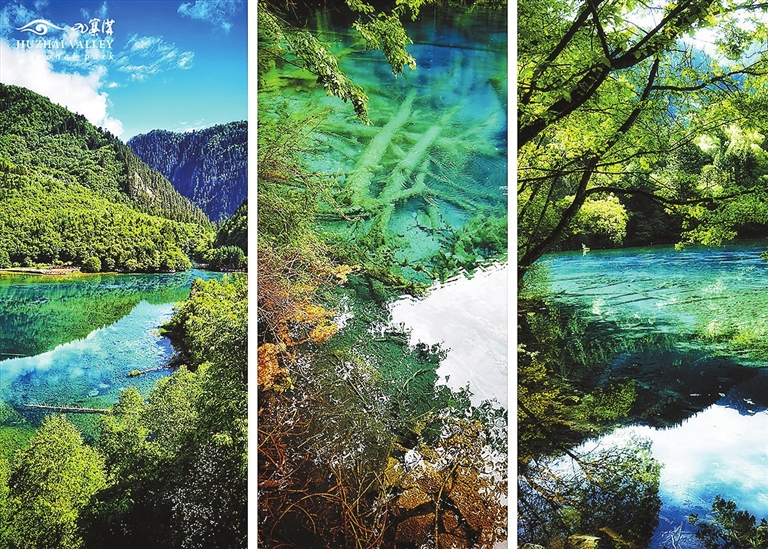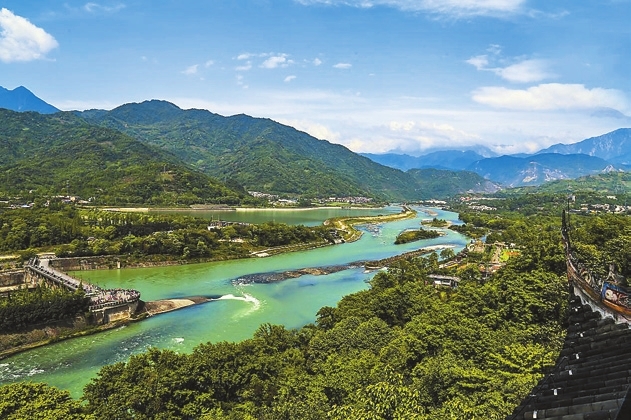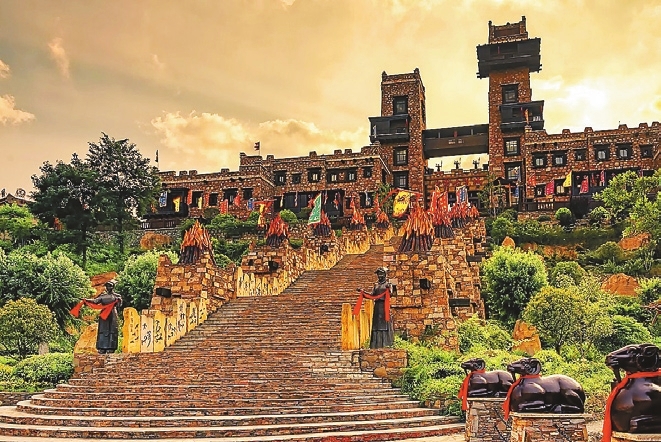



THE panda-themed green train Y982/1 departing from Chengdu Railway Station and heading toward Kaili in Guizhou Province at 8:21 p.m. Sept. 11 is the first special train traveling through Sichuan, Guizhou and Chongqing. In September and October, this special train will depart from Chengdu every Friday, carrying 500 passengers to recall the days of green trains in Southwest China. This is a tourist train operated by Sichuan Southwest Railway International Travel Service Co. Tourists can rest on the train at night and join day tours organized by the travel agency in the daytime. The train runs over 2,400 kilometers during the nine-day journey, passing through six 5A tourist sites, namely Dujiangyan Irrigation System, Jiuzhai Valley, Huangguoshu Waterfall, Qingyan Ancient Town, the Youyang Taohuayuan (Peach Flower Garden) Scenic Spot and Ayi River Scenic Area, and will also pass through five 4A tourist sites, namely Moutai Chinese Liquor Culture City, Xijiang 1,000-Household Miao Village, the Yanhe-Wujiang River Gorge Scenic Area, Chiyou Jiuli Town and Gongtan Ancient Town in Youyang. Apart from connecting different places with stunning scenery, the train also passes through many communities of ethnic minority groups including the Zang (Tibetan), Qiang, Dong, Miao and Tujia ethnic minorities, giving tourists a chance to experience rich folk customs. Dujiangyan Irrigation System The Dujiangyan is an ancient irrigation system in Dujiangyan County-level City, Sichuan Province. Originally constructed around 256 B.C. by the State of Qin as an irrigation and flood control project, it is still in use today. It’s a world famous irrigation system that controls the waters of the Minjiang River and distributes it to the fertile farmland of the Chengdu Plain. Li Bing, then governor of Shu for the State of Qin, and his son headed the construction of the Dujiangyan, which harnessed the river using a new method of channeling and dividing the water rather than by simply damming it. Later, the irrigation system was modified and enlarged during the Tang (618-907), Song (960-1279), Yuan (1279-1368) and Ming (1368-1644) dynasties. Together with nearby Qingcheng Mountain, the Dujiangyan Irrigation System was listed as a UNESCO World Cultural Heritage Site in 2000. Jiuzhai Valley There are no words to describe the beauty of Jiuzhai Valley. A UNESCO World Heritage Site, the valley is known for its many multi-level waterfalls, colorful lakes, and snow-capped peaks. Located in the mountains on the eastern edge of the Qinghai-Tibet Plateau, it is one of the most acclaimed tourist destinations in China, but the pristine scenery was left scarred by landslides and falling rocks triggered by the devastating earthquake in 2017. When the glassy waters of Wuhua Lake (Five-Flower Lake), one of the most beautiful lakes in the valley, turned brown after the quake, people feared that the region’s breathtaking scenery would be destroyed forever. Fortunately, after restoration, the lake has magically regained its original beauty and shines like a sapphire embedded among the valleys. As autumn knocks the door, the valley also presents its most beautiful moments to people, with the colorful leaves across the mountain reflected in the sapphire lake water. Ancient Qiang City The Ancient Qiang City of China in Maoxian County in the Aba Tibetan and Qiang Autonomous Prefecture of Sichuan Province is a unique site for the lively display of Qiang culture. It maintains the original architectural styles, folk customs, and rituals of the Qiang people. Enjoying a history of more than 3,000 years, the Qiang ethnic group is one of the original ethnic groups in China. It is famous for its unique customs, arts, and religious beliefs. Today, about 300,000 Qiang people live in Sichuan, the major habitat of the Qiang people. Every early morning, members of the Qiang people join in the city’s opening ceremony, presenting traditional song and dance performances to welcome tourists. Living in mountainous areas at a high altitude, the Qiang people are also called “an ethnic minority group living in the clouds.” (Chen Xiaochun) | 
